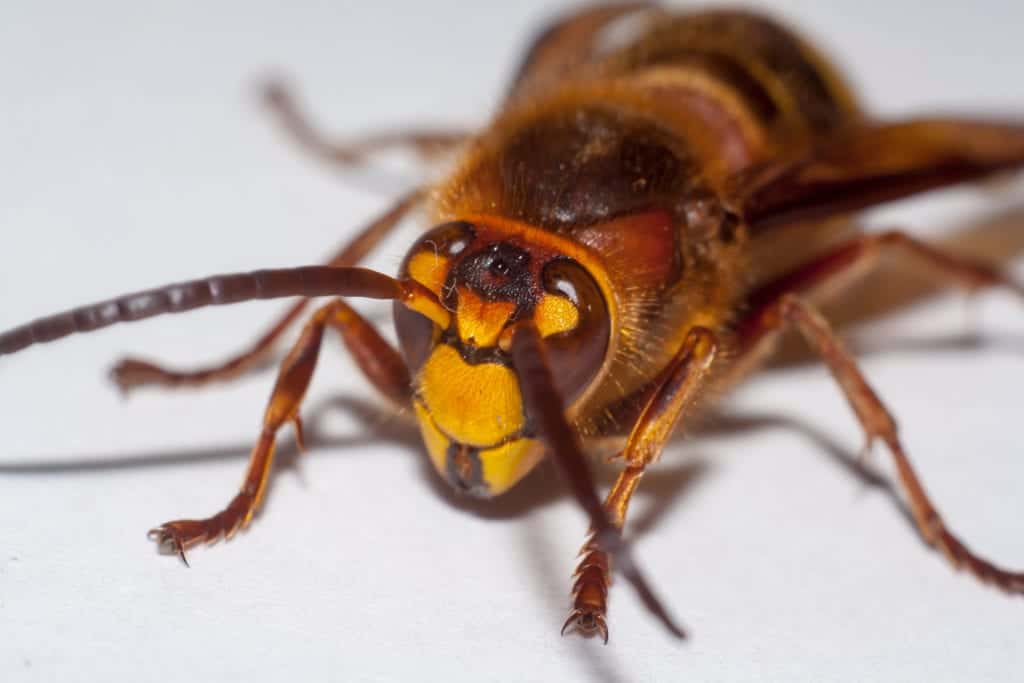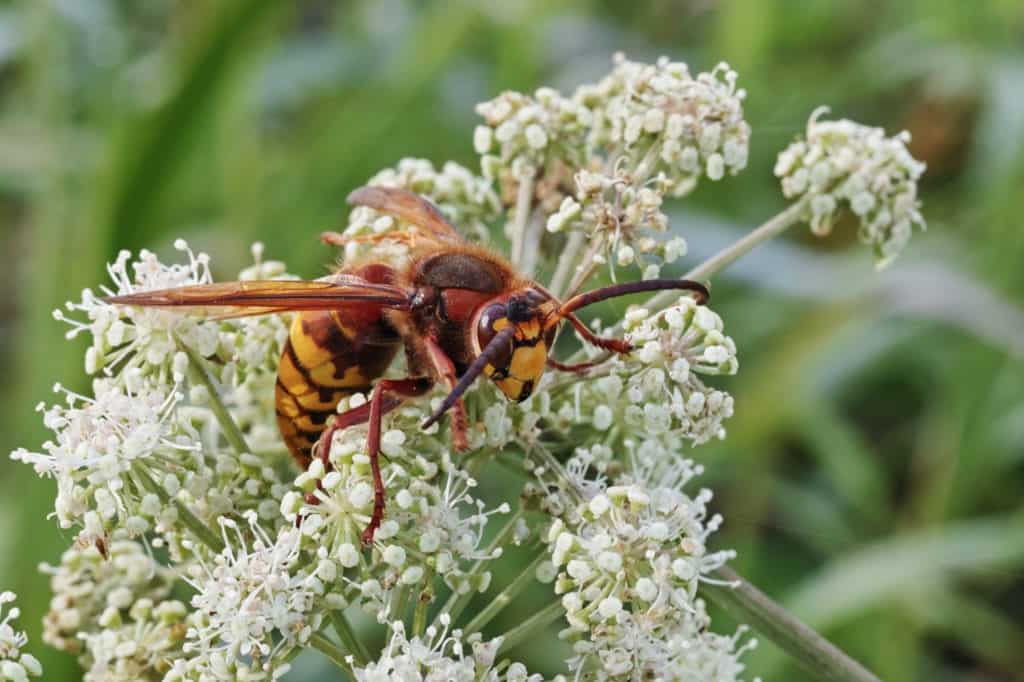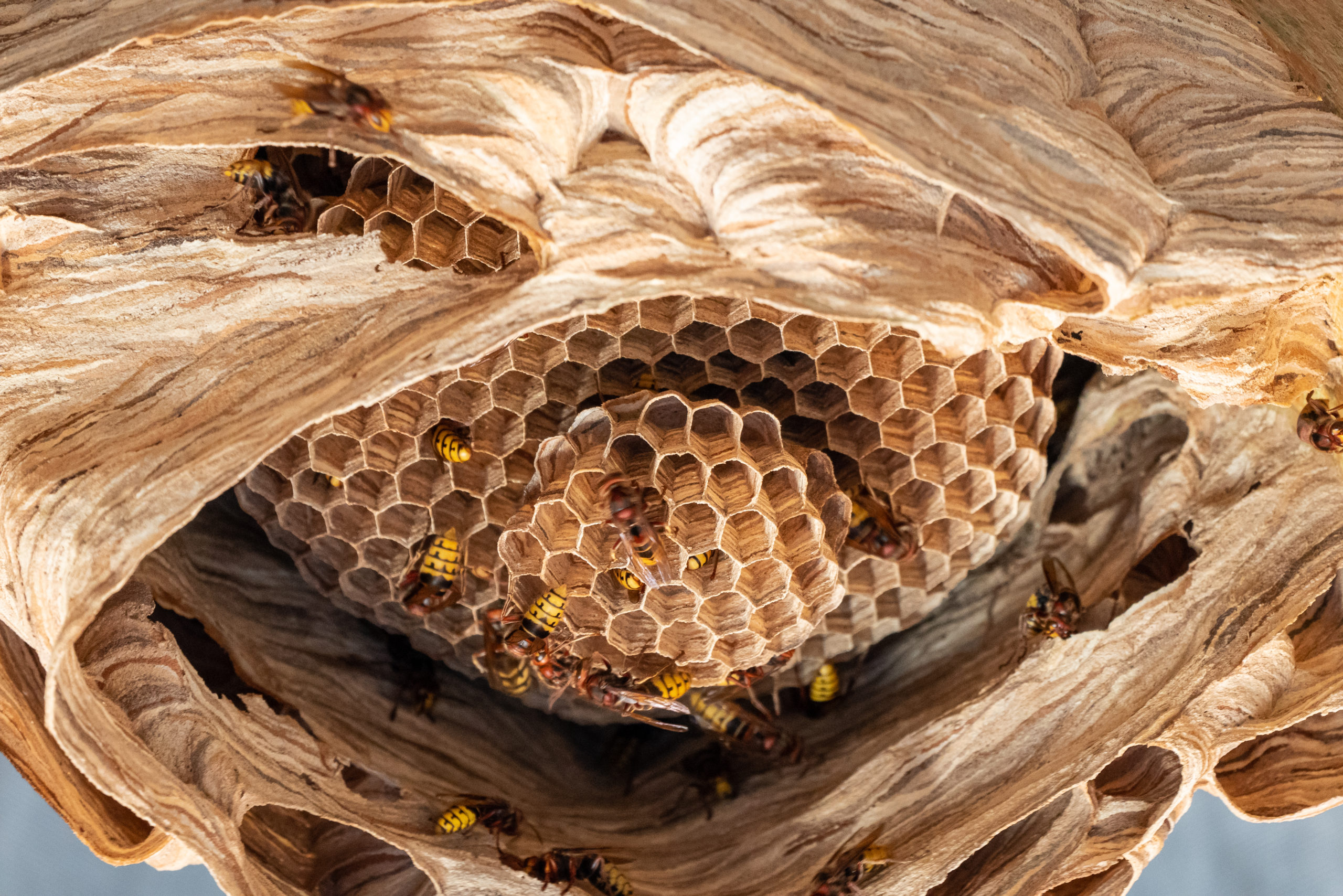Murder Hornets in the US – An Update
Murder Hornets in the US – An Update
Murder Hornets 101
Known scientifically as Vespa Mandarinia, Giant Asian Hornets are well known for causing significant carnage and devastation. Their nickname, ‘Murder Hornet’ was earned due to their tendency to rip off the heads of innocent bees and wipe out entire hives in a matter of a few hours. They are larger than any other species of hornet measuring it at up to two inches in length. Their faces are rather broad with tear-drop shaped eyes, and their coloration is a mix of yellowish-orange and dark brown/black stripes. The most notable feature on the murder wasp is its large, powerful mandibles and one large tooth that is used for digging their subterranean nests. Unfortunately, these pests aren’t just dangerous for honeybees. In Japan, on average, a total of 30-50 deaths a year are caused by murder hornets and, between just July and October in 2013 in the Shaanxi province of China, 41 people were killed and 1,660 were injured by murder hornets. Their stings are notoriously agonizing, and have been described as feeling like, “red-hot thumbtacks being driven into [your] flesh.” 
Original Appearance in the US
While these hornets are of Asian origin, they somehow made their way to the United States in December of 2019. The rouge hornets were initially spotted in Washington State, but were soon found in Canada including a sighting in White Rock, British Columbia and the discovery of an entire hive on Vancouver Island. After expelling the new Canadian hive, scientists and lawmakers launched a widespread hunt for the violent north American invaders. Entomologists stressed that the species posed an enormous threat to our ecosystem at large. With our current honeybee populations already dwindling, putting a strain on the natural pollination of plants across our country, the introduction of this aggressive species could decimate the remaining populations and thereby the security of our flora in the region. 
The New Colony
In mid-October, Washington State officials announced that they had finally tracked down an entire colony of the invading murder hornets and had plans to exterminate them as soon as possible. The nest was discovered in Blaine, Washington in a region of farmland and forests near the Canadian border. While murder hornets are known for their subterranean nests, this colony surprisingly opted for an aerial-constructed nest hidden within a tree hollow. Entomologists estimated the total population to be roughly 100-200 hornets, and that they were getting very close to their “slaughter phase,” in which they decimate beehives and harvest their brood for food. 
Finding the Nest
With the “slaughter phase” looming in the near future, the race to find the hive became a crucial operation. Individual hornets had been found within the area for a significant amount of time, but the location of the nest had remained unknown. However, following the capture of three different hornets, entomologists outfitted the insects with radio trackers using glue and dental floss in order to attempt to follow them back to the hive. Sven Spichiger, entomologist for the Washington State Department of Agriculture, followed the signal from one of the tracked hornets when it was giving off a stationary reading. He recalls the following about his experience, “I actually heard a hornet buzz over my head, so we assumed she had left the location. But then we heard another one buzz over my head, and I took a step back and realized we were actually standing right under the nest. We had in fact tracked her straight back to where she came from… we were pretty happy about that.” Immediately, workers armed with full-body protective suits were dispatched to remove the nest. They first filled the cracks and crevices in the tree with foam before wrapping the tree in cellophane to ensure all other exits had been sealed. The workers then utilized a specially designed vacuum hose to remove all or the hornets from the nest. In total 98 worker hornets were captured. 
The Aftermath
Upon examination of the newly emptied nest, 108 cells appeared to be adolescent queens nearly ready to emerge. There was also evidence of roughly 76 other cells that may have previously contained queens as well. Spichiger commented on this concerning find, stating that, “a portion of [queens] actually will never end up surviving because they didn’t get enough nutrition before leaving the nest. It really seems like we got there just in the nick of time as our original vacuum extraction seemed to only give us workers. We only got queens four days after we cracked it open, so if any queens had already left the nest, it was just a few.” The 98 captured hornets are currently being used for scientific research, some of which may help to track down remaining hornets in the area. Spichiger remains hopeful that they can continue to locate other potential nests and eradicate the dangerous invasive species from the United States. 
Citations
Baker, M. (2020) ‘Murder Hornets’ in the U.S.: The Rush to Stop the Asian Giant Hornet, The New York Times. The New York Times Company. Available at: https://www.nytimes.com/2020/05/02/us/asian-giant-hornet-washington.html (Accessed May 2020).
Barth, Z., Kearns, T. and Wason, E. (2013) Vespa Mandarinia, Animal Diversity Web. University of Michigan. Available at: https://ainmaldiversity.org/accounts/Vespa_mandarinia/ (Accessed: May 2020).
Levenson, M. (2020) Murder Hornet Nest, First in U.S., Is Removed in Washington State, The New York Times. The New York Times. Available at: https://www.nytimes.com/2020/10/23/us/-murder-hornet-nest-washington.html (Accessed: February 3, 2021).
Madani, D. (2020) ‘Murder Hornet’ Nest had Potential to Spawn Almost 200 Queens in Washington State, NBC News. NBC Universal News Group. Available at: https://www.nbcnews.com/news/animal-news/murder-hornet-nest-had-potential-spawn-almost-200-queens-washington-n1247302 (Accessed: February 3, 2021).
Martin, W. (2020) ‘Murder Hornets’ Spotted in the U.S. Here’s What You Need to Know, Science Alert. Business Insider. Available at: https://www.sciencealert.com/this-is-a-murder-hornet-and-it-s-currently-taking-over-the-us (Accessed: May 2020).
Rosane, O. (2020) ‘Murder Hornets’ Spotted in the U.S. for the First Time, EcoWatch. Available at: https://www.ecowatch.com/murder-hornets-honeybees-us-2645912097.html?rebelltitem=2#rebelltitem2 (Accessed: May 2020).
Request a Free Quote Today
(We do not share your data with anybody, and only use it for its intended purpose)
